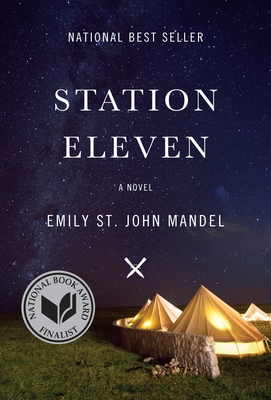Station Eleven
Emily St. John Mandel

This was a very well-written, fun and thought-provoking novel, which I would recommend to almost anyone. It takes place in a speculative, post-apocalyptic (and pre-apocalyptic) near future, but is hardly science fiction.
The post-crash setting is somewhat similar to the final, post-apocalyptic setting in David Mitchell’s “The Bone Clocks” (which I wish had itself had a longer airing!). It serves as a thoughtful, but by no means overbearing, meditation on our current society, both in its strengths and in its absurdities. There are many charming or touching moments of people recollecting the world as it was, including a pretty funny conversation about business buzzwords.
The characters themselves are also well-drawn and appealing, with several achieving an impressive depth (I can think of five really solid characters off the top of my head). A key aspect of the book was its extended redemption of the character of Arthur Leander, who is quite offputting in many ways, but whose humanity and frailties are gently uncovered. The other best character is probably Miranda Caroll, author of the titular comic book. The “Station Eleven” comic is a subtle glue that holds the pre- and post- worlds together, and provides some food for thought without being an obvious allegory in any way.
The book is just full of memorable scenes and images. I guess I won’t mention them here because most of them are spoiler-y, but mostly, small and believable acts of humanity in the face of a terrible disaster. (I will just say that the newspaper and the Museum of Civilization were my favorite parts!) Much like “Battlestar Galactica”, SE is a story that is incidentally speculative fiction, but mostly an exploration of people and their relationships.